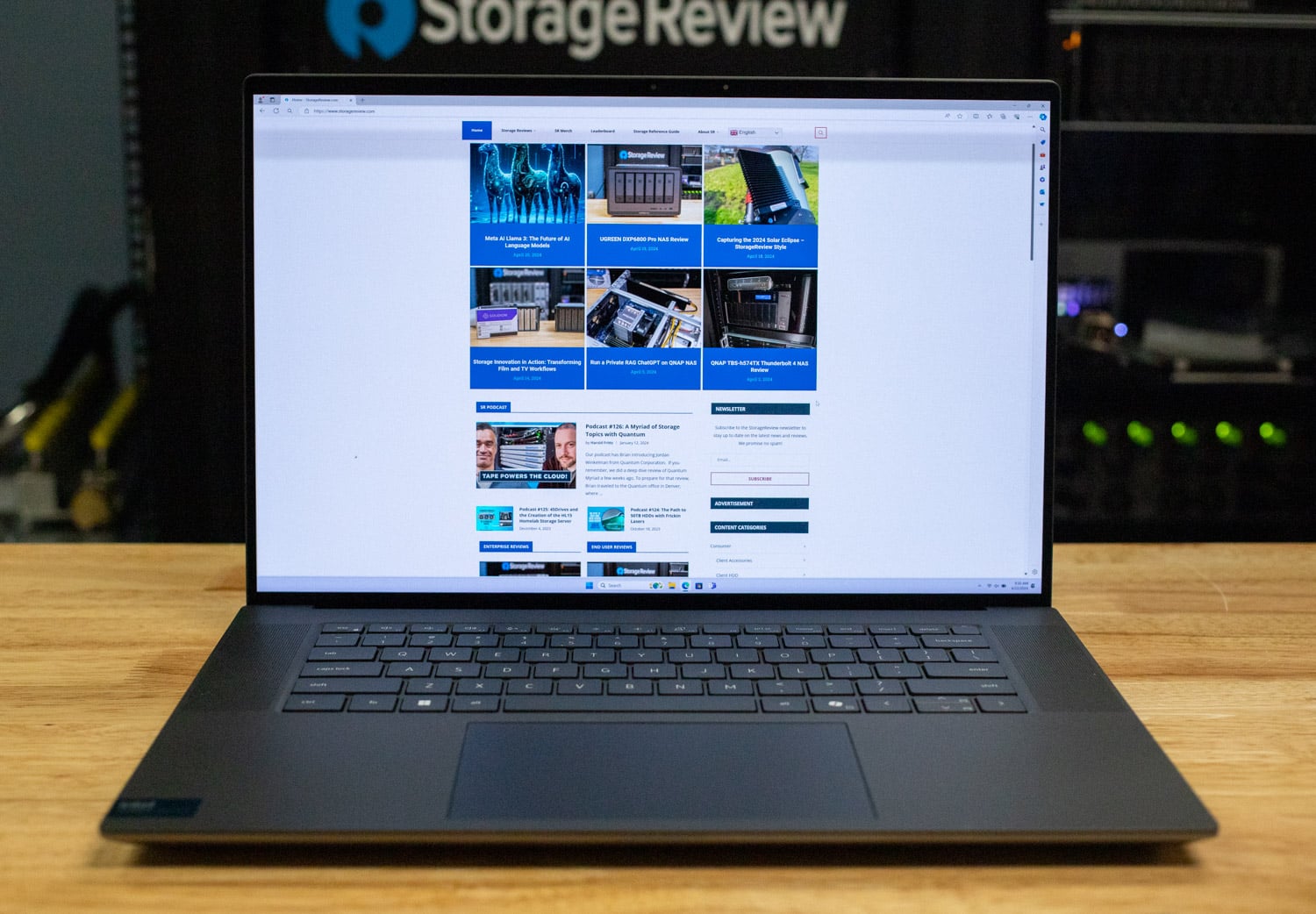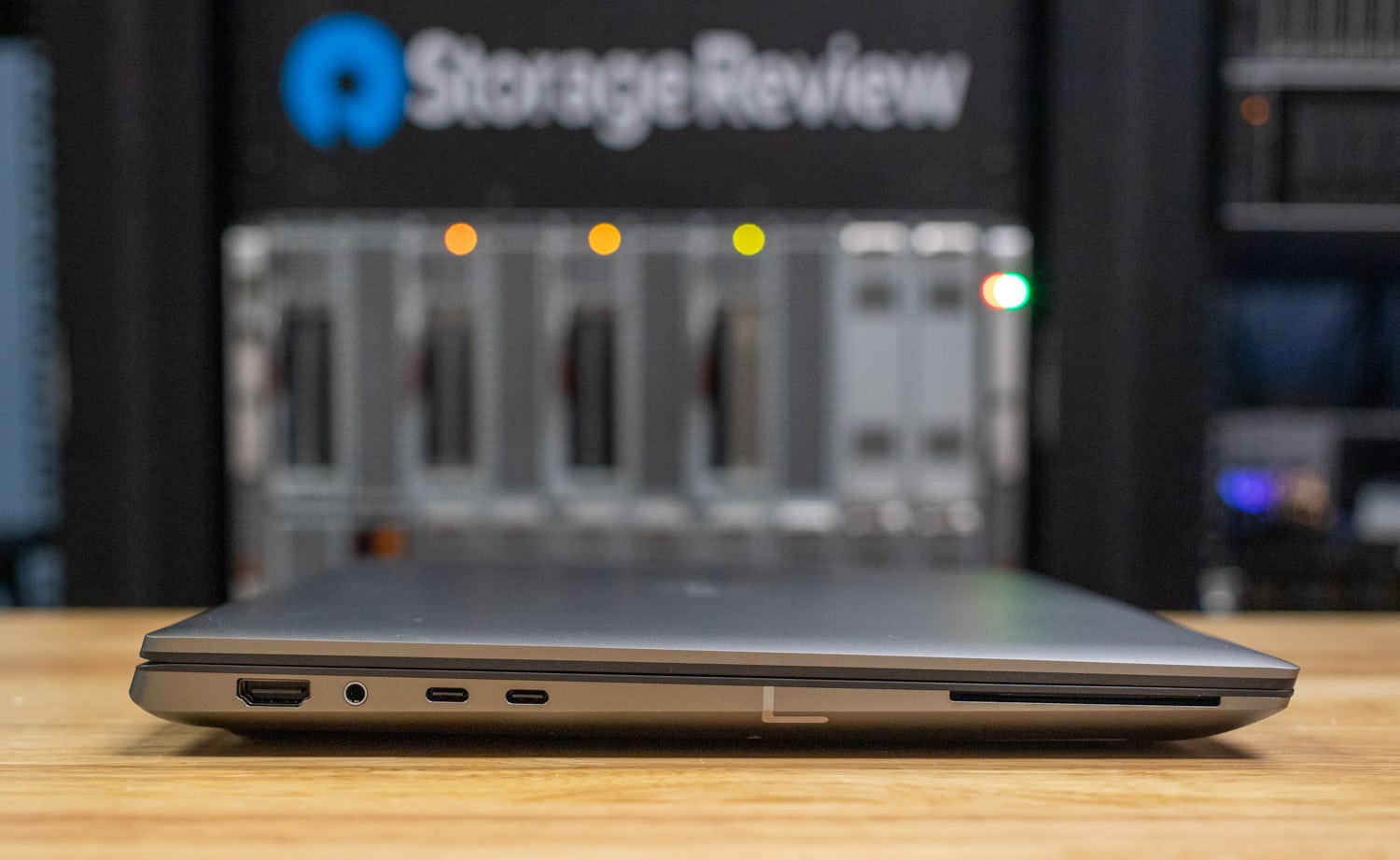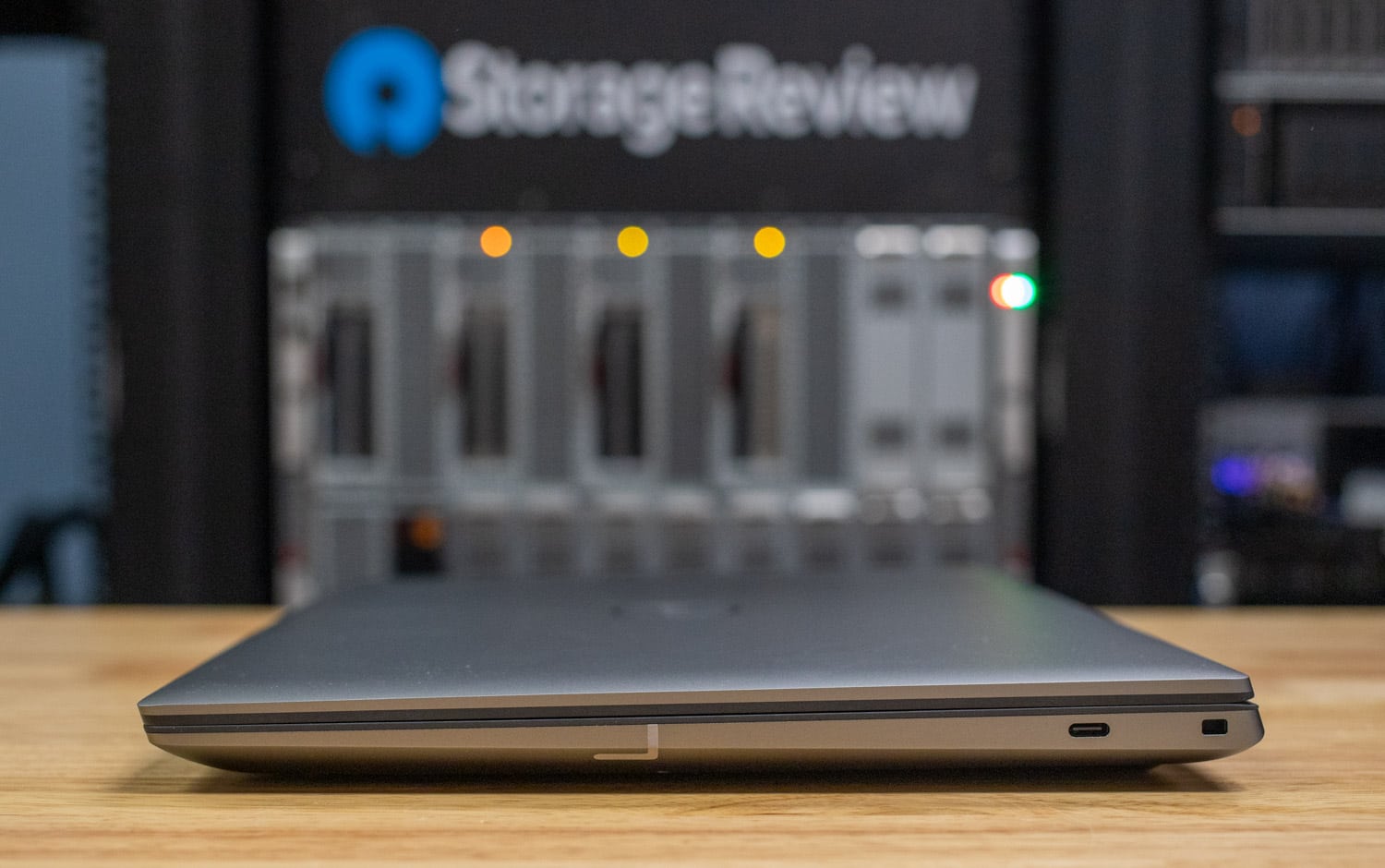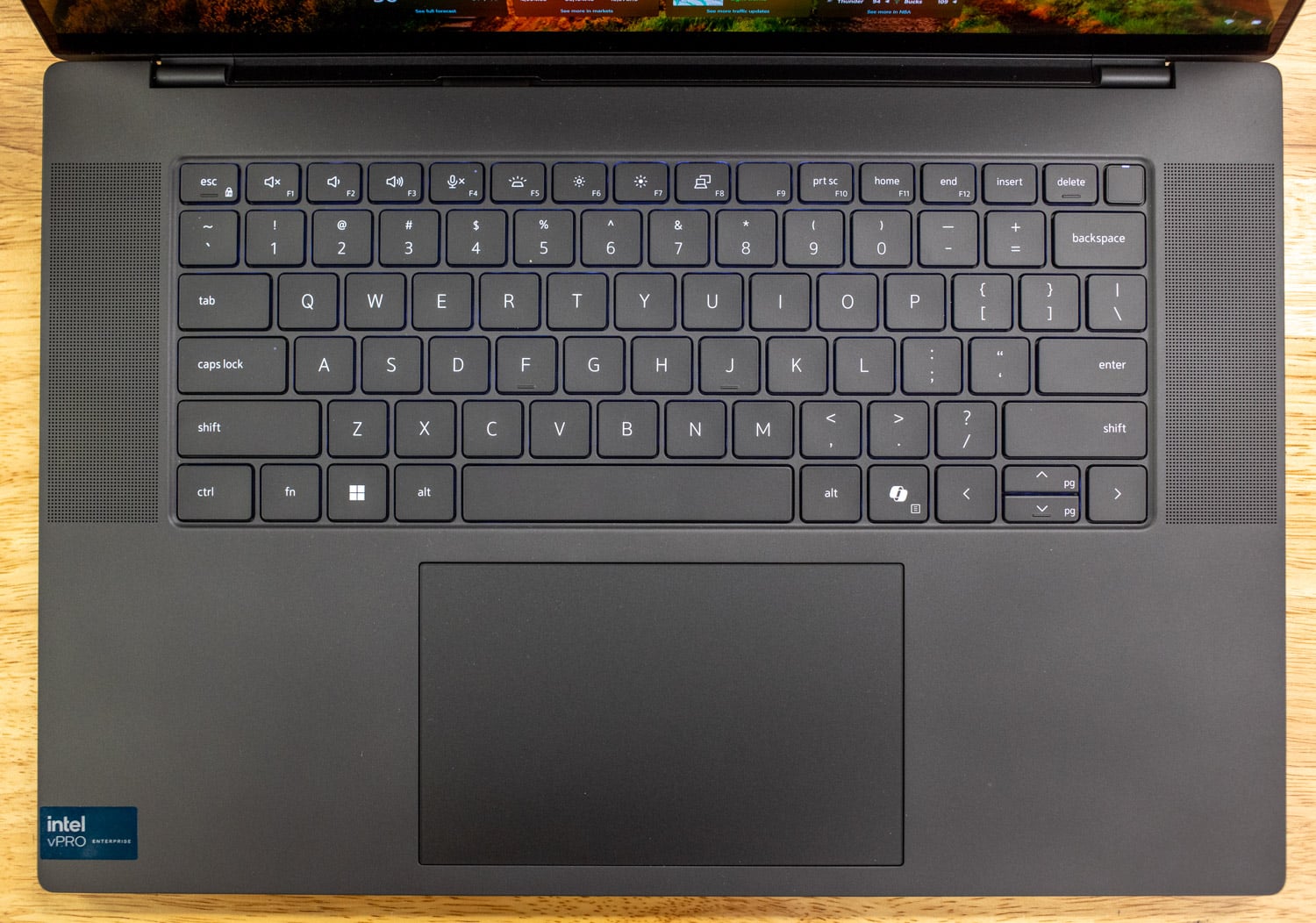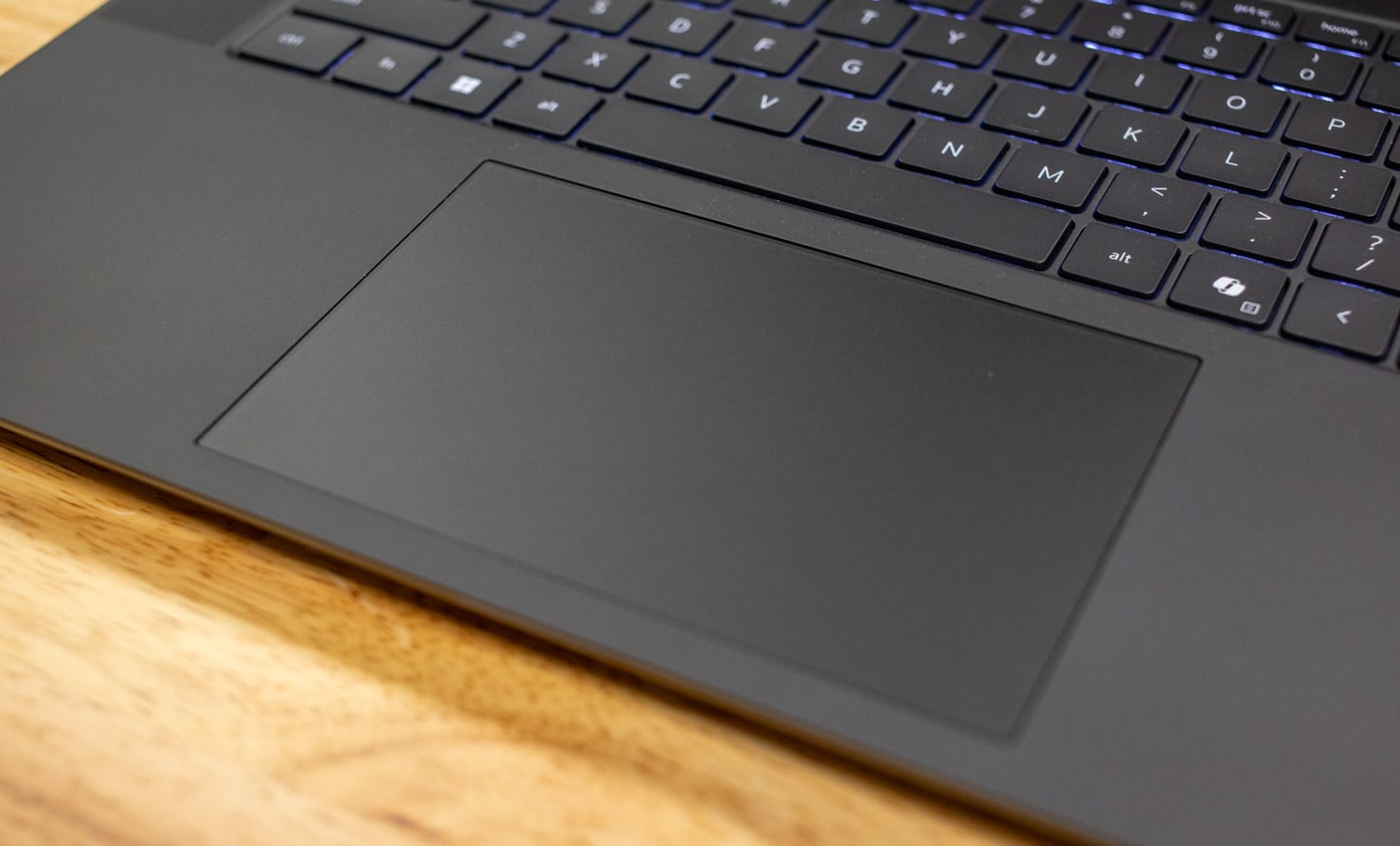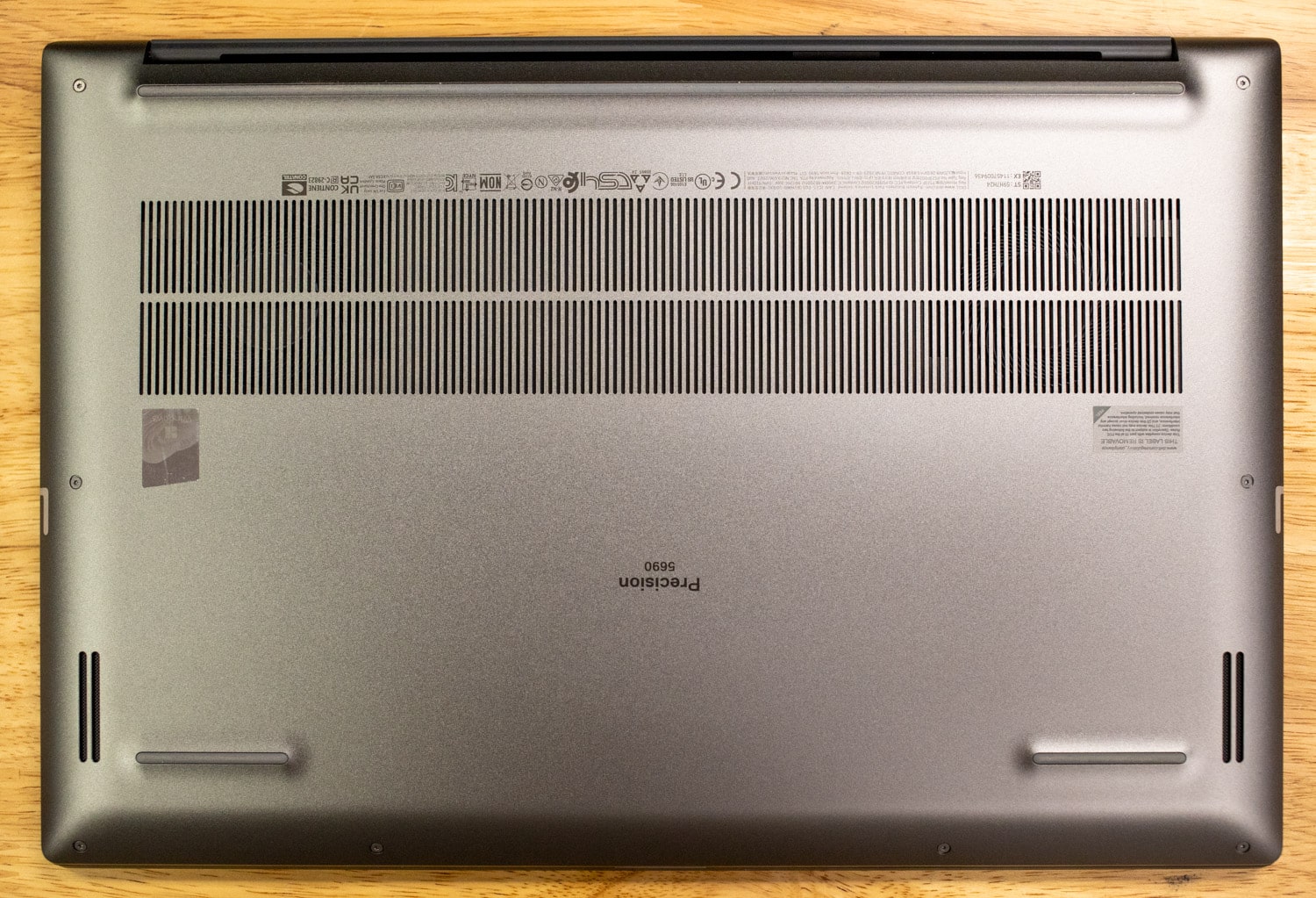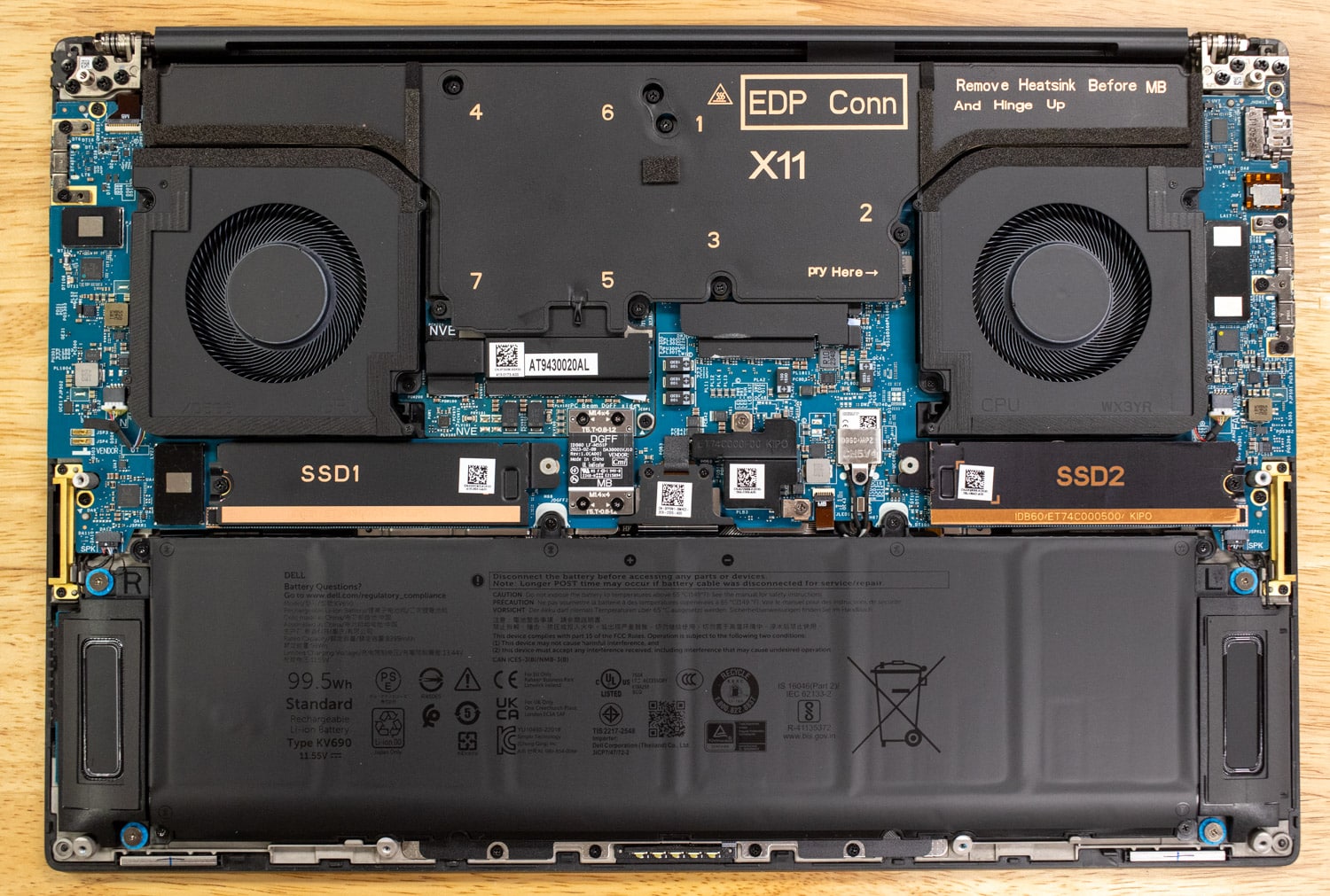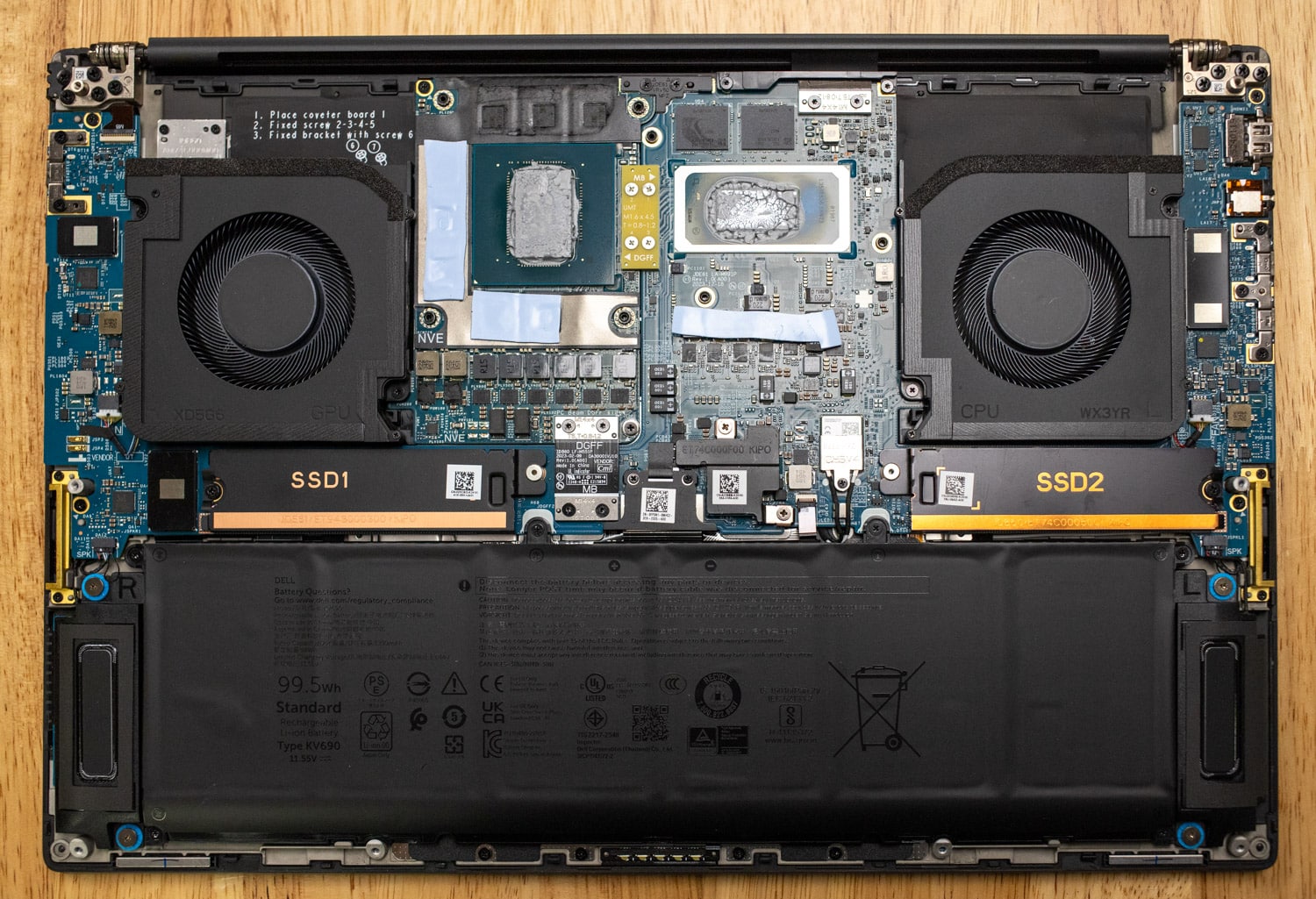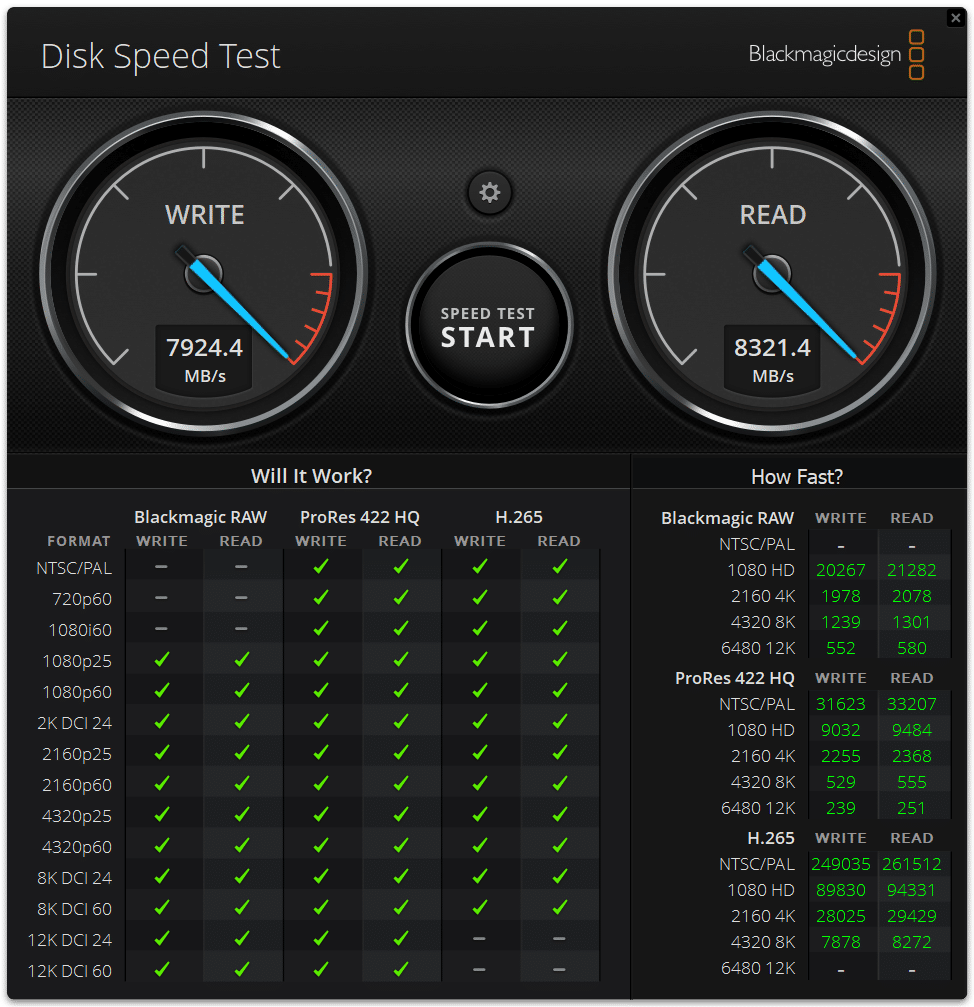The Dell Precision 5690 laptop is surprisingly lightweight but packs a powerful punch, our review unit includes a NVIDIA RTX 5000 Ada GPU.
Dell’s most portable 16-inch workstation, the Precision 5690, features Intel’s AI-centric Core Ultra processor, an OLED screen, and professional NVIDIA Ada Generation graphics.
This Precision’s audience is power users who require a balance of portability and performance. The upstream Precision 7680 offers more performance from its Core HX-class processors but is considerably heavier and thicker even in its “thin” chassis configuration. (The Precision 5690 is 0.87 x 13.92 x 9.46 inches (HWD) and 4.46 pounds versus the Precision 7680 Thin’s 0.98 x 14.02 x 10.18 inches and 5.75 pounds.)
The Precision 5690 uses Intel’s new Core Ultra H-class processor (codename Meteor Lake) with a built-in Neural Processing Unit (NPU) that Intel calls AI Boost. Dell implemented these chips rated at 45 watts of processor base power, an important distinction as the H-class chips can also be rated at 28 watts.
Other specifications include soldered LPDDR5-7467 RAM (64GB max), two Gen4 M.2 2280 slots, and an Intel WiFi 7 BE200 wireless card with Bluetooth 5.4. Graphics start with the Intel Arc Pro integrated solution and scale to the extremely expensive NVIDIA RTX 5000 Ada Generation GPU. Overall, the Precision 5690 meets expectations for a thin-and-light mobile workstation.
The Precision 5690’s full specifications are as follows:
| Processor Options |
|
| Operating System |
|
| Memory Options |
|
| Graphics |
|
| Storage Options |
|
| Dimensions and Weight |
|
| Wireless | Intel® Wi-Fi 7 BE200, 2×2, 802.11be, MU-MIMO, Bluetooth® 5.4 wireless card |
| Battery Options |
|
| Display Options |
|
| Camera | FHD IR camera with HDR, Clover Falls+ presence detection sensor, ambient light sensor, Windows Hello compliance |
| Ports and Slots |
|
| Sensors |
|
| Productivity Software |
|
| Security Software |
|
| Systems Management |
|
Dell Precision 5690 Build and Design
Precision laptops have a reputation for being the highest quality, and the Precision 5690 doesn’t disappoint. Its aluminum exterior exhibits almost no flex, making it a solid laptop. We imagine it will stand up to travel reasonably well.
The dark chassis color works well in professional environments, not standing out like a gaming laptop or a huge desktop replacement workstation. Given its 16-inch screen, the Precision 5690 is reasonably portable at 0.87 x 13.92 x 9.46 inches (HWD). It starts at 4.46 pounds with integrated graphics; our review model is probably a few tenths of a pound heavier to accommodate its dedicated NVIDIA RTX 5000 Ada Generation GPU and cooling solution. Packing all this performance in a less than one-inch thin chassis is impressive.
Our unit’s optional 3840×2160 OLED touchscreen is a sight to behold. We’re convinced nothing can look bad on this screen, even plain old office work. Dell rates it for 400 nits of brightness, which is suitable for an OLED panel, and 100% of DCI-P3 coverage ought to bode well for any color-sensitive work. The base 1920×1200 IPS screen probably isn’t bad either, but if your software scales properly in Windows 11, we highly recommend springing for this OLED panel.
The left port selection includes HDMI 2.1 video output, a 3.5mm universal audio jack, and two Thunderbolt 4 (USB Type-C connector) ports. Our unit also has the optional SmartCard reader. The 165-watt power adapter connects to either Thunderbolt 4 port.
The right edge of the unit includes USB-C ports, a DisplayPort video output, and a wedge lock slot. Our unit doesn’t have the optional SD card reader, which would go towards the front edge.
Not having any USB Type-A ports is disappointing, as clearly, the laptop appears thick enough to accommodate one or two, but Dell does ship a USB-A to USB-C dongle in the box.
The Precision’s island-style keyboard has a shallow but direct feel and is pleasant for long typing sessions. The white backlighting stands out nicely against the black keys. The power button at the top right corner doubles as a fingerprint reader. The FHD webcam over the display, which has an infrared sensor, can also be used for biometric sign-ins.
There’s a Copilot key next to the right Alt key, a new feature on many Core Ultra-equipped laptops. Dell’s choice of half-height up and down arrow keys sandwiched between full-size left and right keys is a regrettable layout choice and an easy way to make typos. Unfortunately, page up and page down are Fn-key pairings with the up and down arrow keys. At least the dedicated Home and End keys live on the top row.
The Precision’s touchpad, meanwhile, has a luxuriously large surface and makes multi-finger gestures a breeze. The feedback is haptic-driven.
With this much power, users should expect the fans to kick on pretty regularly. They’re clearly audible under load but not distracting and they do well to cool the system, even when heavily tasked with rendering or other GPU-heavy workloads.
Dell Precision 5690 Upgradeability
Servicing the Precision 5690 requires removing the bottom panel, which is secured by Torx screws. Once the screws are loosened, the easiest way to pop the panel is to start at the back with a plastic pry tool or credit card and pry around the edges until the panel pops free. The panel is hinged at the front edge.
The two M.2 2280 SSDs are visible just below the cooling fans. The massive 6-cell 100Whr battery pack takes up about half the chassis.
The big heatsink in the center reveals the GPU on the left and the CPU on the right. The RAM in this laptop is soldered and can’t be upgraded later. The RAM modules are the two chips located directly above the silver-outlined CPU on the right side. The CPU and GPU have dedicated fans.
Dell Precision 5690 Performance
Our Precision 5690 review unit has the following specifications:
- Intel Core Ultra 9 185H (16 cores, 22 threads, up to 5.1GHz, 45W) w/ vPro Enterprise
- Windows 11 Pro
- 32GB LPDDR5-7467
- NVIDIA RTX 5000 Ada 16GB GDDR6
- 16-inch OLED 3840×2160 touch
- 2x 512GB Gen4 SSD RAID 0
- Intel WiFi 7 BE200 2×2
- 6-cell 100Whr battery
- 165-watt power adapter
- Three years ProSupport next business day warranty
This unit is a whopping $6,501 through Dell.com, though that’s the single-unit price and probably not what you’d pay as an enterprise or business customer. (Dell continually reminds us that a single-digit percentage of its business machines are sold through its site.)
The base model starts with a Core Ultra 5 135H (14 cores, 18 threads), 16GB of RAM, Intel Arc Pro integrated graphics, a 16-inch 1920×1200 non-touch IPS screen, and a 256GB SSD. In our view, it doesn’t qualify as a workstation because it has integrated graphics. We’d also highly recommend 32GB of RAM since it isn’t upgradeable (being the soldered LPDDR5 variety), so you’re stuck with what comes out of the factory. Stepping up to the Core Ultra 7 155H would also be a good idea, considering it has the same number of cores and threads as the Core Ultra 9 185H but with a lower price point. Only select CPUs support Intel vPro Enterprise, and the Core Ultra 7 155H isn’t one of them.
Now, onto our performance comparisons. We’re pitting the new Precision 5690 against its predecessor, the Precision 5680, outfitted with a Core i9-13900H but otherwise similar hardware, including 32GB of RAM, 2x 512GB Gen4 SSD in RAID 0, and RTX 5000 Ada Generation GPU.
SPECviewperf 2020
Our first test is SPECviewperf 2020, the worldwide standard for measuring graphics performance of professional applications under the OpenGL and Direct X application programming interfaces. The viewsets (or benchmarks) represent graphics content and behavior from actual applications without having to install the applications themselves. The newest version of this benchmark went through significant updates late last year, including new viewsets taken from traces of the latest versions of 3ds Max, Catia, Maya, and Solidworks applications. In addition, they added support within all viewsets for both 2K and 4K resolution displays.
The two Precisions’ numbers were sometimes close, with a few wild anomalies (Creo-03 and Medical-03), but the older Precision was faster overall. (See Maya-06, Snx-04, and Sw-05.) Some differences could be attributed to drivers, but we can’t say.
| SPECviewperf2020 Viewsets (Higher is better) | Dell Precision 5690 (Core Ultra 9 185H, RTX 5000 Ada) | Dell Precision 5680 (Core i9-13900H, RTX 5000 Ada) |
| 3dsmax-07 | 94.02 | 96.07 |
| Catia-06 | 64.05 | 68.55 |
| Creo-03 | 61.44 | 120.86 |
| Energy-03 | 37.71 | 38.66 |
| Maya-06 | 194.64 | 220.76 |
| Medical-03 | 56.34 | 32.91 |
| Snx-04 | 210.14 | 263.76 |
| Sw-05 | 126.95 | 133.43 |
Luxmark
Another 3D benchmark we will look at is LuxMark, an OpenCL GPU benchmarking utility. Here again, the newer Precision was a little off the pace set by the previous-generation model.
| Luxmark (Higher is better) | Dell Precision 5690 (Core Ultra 9 185H, RTX 5000 Ada) | Dell Precision 5680 (Core i9-13900H, RTX 5000 Ada) |
| Hallbench | 20,507 | 21,105 |
| food | 7,680 | 7,878 |
ESRI
Next up is the Environmental Systems Research Institute (Esri) benchmark. Esri is a supplier of Geographic Information System (GIS) software. Esri’s Performance Team designed their PerfTool add-in scripts to launch the ArcGIS Pro automatically. This application uses a “ZoomToBookmarks” function to browse various predefined bookmarks and create a log file with all the key data points required to predict the user experience. The script automatically loops the bookmarks three times to account for caching (memory and disk cache). In other words, this benchmark simulates heavy graphical use that one might see through Esri’s ArcGIS Pro software.
The tests consist of three primary datasets. Two are 3-D city views of Philadelphia, PA, and Montreal, QC. These city views contain textured 3-D multipatch buildings draped on a terrain model and draped aerial images. The third dataset is a 2-D map view of the Portland, OR region. This data contains detailed information for roads, land use parcels, parks and schools, rivers, lakes, and hill-shaded terrain.
The Precision 5690 finally achieves victories over its predecessor here, coming out well ahead in all tests.
First up is the Montreal model.
| ESRI ArcGIS Pro 2.3 Montreal | |
| Average FPS | Average |
| Dell Precision 5690 (Core Ultra 9 185H, RTX 5000 Ada) | 135.57 |
| Dell Precision 5680 (Core i9-13900H, RTX 5000 Ada) | 108.22 |
| Minimum FPS | Average |
| Dell Precision 5690 (Core Ultra 9 185H, RTX 5000 Ada) | 69.40 |
| Dell Precision 5680 (Core i9-13900H, RTX 5000 Ada) | 44.86 |
Next up is Philly.
| ESRI ArcGIS Pro 2.3 Philly | |
| Average FPS | Average |
| Dell Precision 5690 (Core Ultra 9 185H, RTX 5000 Ada) | 121.30 |
| Dell Precision 5680 (Core i9-13900H, RTX 5000 Ada) | 111.37 |
| Minimum FPS | Average |
| Dell Precision 5690 (Core Ultra 9 185H, RTX 5000 Ada) | 74.41 |
| Dell Precision 5680 (Core i9-13900H, RTX 5000 Ada) | 52.35 |
Last is the Portland model.
| ESRI ArcGIS Pro 2.3 Portland | |
| Average FPS | Average |
| Dell Precision 5690 (Core Ultra 9 185H, RTX 5000 Ada) | 150.51 |
| Dell Precision 5680 (Core i9-13900H, RTX 5000 Ada) | 132.68 |
| Minimum FPS | Average |
| Dell Precision 5690 (Core Ultra 9 185H, RTX 5000 Ada) | 108.41 |
| Dell Precision 5680 (Core i9-13900H, RTX 5000 Ada) | 93.01 |
OctaneBench
Next, we look at OctaneBench, a benchmarking utility for OctaneRender, another 3D renderer with RTX support similar to V-Ray. The Precision 5690 again improved over the Precision 5680, with higher numbers in almost every test.
| OctaneBench (Score, higher is better) | Kernel | Dell Precision 5690 (Core Ultra 9 185H, RTX 5000 Ada) | Dell Precision 5680 (Core i9-13900H, RTX 5000 Ada) |
| Interior | Info channels | 21.78 | 20.38 |
| Interior | Direct lighting | 64.66 | 63.04 |
| Interior | Path tracing | 80.02 | 75.75 |
| Idea | Info channels | 12.74 | 11.78 |
| Idea | Direct lighting | 49.92 | 48.23 |
| Idea | Path tracing | 60.05 | 58.89 |
| ATV | Info channels | 32.32 | 30.64 |
| ATV | Direct lighting | 65.83 | 64.19 |
| ATV | Path tracing | 83.07 | 80.33 |
| Box | Info channels | 17.30 | 16.29 |
| Box | Direct lighting | 60.13 | 61.83 |
| Box | Path tracing | 66.19 | 66.23 |
Blackmagic RAW Speed Test
We have also started running Blackmagic’s RAW speed test, which tests video playback. The CPU test results were a draw, but the Precision 5690 handily outperformed the older model in the CUDA test.
| Blackmagic RAW Speed Test (Higher is better) | Dell Precision 5690 (Core Ultra 9 185H, RTX 5000 Ada) | Dell Precision 5680 (Core i9-13900H, RTX 5000 Ada) |
| 8K CPU | 67 fps | 68 fps |
| 8K CUDA | 97 fps | 89 fps |
7-Zip Compression
The built-in memory benchmark in the popular 7-Zip utility shows the Precision 5690 doing reasonably better than the Precision 5680, especially if we look at the decompression numbers. It’s a sold generation on generation gain.
| 7-Zip Compression Benchmark (Higher is better) | Dell Precision 5690 (Core Ultra 9 185H, RTX 5000 Ada) | Dell Precision 5680 (Core i9-13900H, RTX 5000 Ada) |
| Current CPU Usage | 1085% | 863% |
| Current Rating/Usage | 7.424 GIPS | 9.330 GIPS |
| Current Rating | 80.578 GIPS | 80.486 GIPS |
| Resulting CPU Usage | 943% | 875% |
| Resulting Rating/Usage | 8.771 GIPS | 9.352 GIPS |
| Resulting Rating | 82.378 GIPS | 81.748 GIPS |
| Decompressing | ||
| Current CPU Usage | 1830% | 1870% |
| Current Rating/Usage | 5.322 GIPS | 5.054 GIPS |
| Current Rating | 97.395 GIPS | 94.481 GIPS |
| Resulting CPU Usage | 1796% | 1845% |
| Resulting Rating/Usage | 5.414 GIPS | 5.091 GIPS |
| Resulting Rating | 97.205 GIPS | 93.878 GIPS |
| Total Rating | ||
| Total CPU Usage | 1369% | 1360% |
| Total Rating/Usage | 7.093 GIPS | 7.221 GIPS |
| Total Rating | 89.972 GIPS | 87.813 GIPS |
Blackmagic Disk Speed Test
We run the popular Blackmagic Disk Speed Test against the system’s primary storage drive. The dual Gen4 RAID 0 drives in the Precision 5690 produced highly respectable numbers.
UL Procyon AI Inference
UL’s Procyon estimates a workstation’s performance for professional apps. We ran the test on each system, once on the CPU and once on the GPU, with TensorRT. The CPU isn’t a great device for this kind of work based on the numbers versus the GPU, but the Precision 5690’s Core Ultra 9 chip just didn’t impress here, falling far behind the Precision 5680’s Core i9 by about a factor of two in each test. The Precision 5690’s GPU scores also trailed for reasons we can’t definitively explain; perhaps they were brought down by the lesser CPU performance.
| UL Procyon Average Inference Times (Lower is better) | Dell Precision 5690 (Core Ultra 9 185H) | Dell Precision 5690 (RTX 5000 Ada) | Dell Precision 5680 (Intel Core i9-13900H) | Dell Precision 5680 (RTX 5000 Ada) |
| MobileNet V3 | 3.12 ms | 0.78 ms | 1.69 ms | 0.62 ms |
| ResNet 50 | 34.87 ms | 1.83 ms | 15.23 ms | 1.69 ms |
| Inception V4 | 106.26 ms | 5.68 ms | 46.06 ms | 5.20 ms |
| DeepLab V3 | 100.03 ms | 6.53 ms | 51.84 ms | 4.84 ms |
| YOLO V3 | 237.69 ms | 5.81 ms | 107.40 ms | 5.20 ms |
| Real-ESRGAN | 8,052.84 ms | 154.32 ms | 4,825.08 ms | 145.23 ms |
y-cruncher
y-cruncher is a multi-threaded and scalable program that can compute Pi and other mathematical constants to trillions of digits. Since its launch in 2009, it has become a popular benchmarking and stress-testing application for overclockers and hardware enthusiasts. We only have numbers for the Precision 5690 in this test.
| y-cruncher (Total Computation time) | Dell Precision 5690 (Core Ultra 9 185H, RTX 5000 Ada) |
| 1 billion digits | 33.703 seconds |
| 2.5 billion | 99.282 seconds |
| 5 billion | 220.540 seconds |
Geekbench 6
Geekbench 6 is a cross-platform benchmark that measures overall system performance. You can find comparisons to any system you want in the Geekbench Browser. We also only have numbers for the Precision 5690 in this test.
| Geekbench 6 (Higher is better) | Dell Precision 5690 (Core Ultra 9 185H, RTX 5000 Ada) |
| CPU Single-Core | 2,479 |
| CPU Multi-Core | 14,279 |
| GPU (RTX 5000 Ada) | 157,861 |
| GPU (Arc integrated GPU) | 36,929 |
Cinebench R23
This benchmark uses all CPU cores and threads to generate an overall score. This is another newer test we run where we only have numbers for the Precision 5690.
| Cinebench R23 (Higher is better) | Dell Precision 5690 (Core Ultra 9 185H, RTX 5000 Ada) |
| Multi-Core | 18,507 |
| Single-Core | 1,817 |
Cinebench 2024
We also started running the latest Cinebench test. Likewise, we only have numbers for the Precision 5690.
| Cinebench R23 (Higher is better) | Dell Precision 5690 (Core Ultra 9 185H, RTX 5000 Ada) |
| Multi-Core | 1,030 |
| Single-Core | 108 |
| GPU | 16,394 |
Conclusion
Dell’s Precision 5690 impressed us. Its metal design is very well put together and looks professional anywhere it goes. We were pretty taken aback by its beautiful 3840×2160 OLED touchscreen. Its input devices are also solid.
The Dell Precision 5690 laptop is surprisingly lightweight but packs a powerful punch, as expected. Our review unit’s NVIDIA RTX 5000 Ada Generation GPU is quite expensive but provides incredible capability in this form factor. However, we were less impressed with the Core Ultra 9 185H processor, as it often didn’t offer much advantage over the previous-generation Core i9-13900H in the Precision 5680. It’s not a step backward, though; we expect software to take more advantage of Core Ultra’s AI Boost engine.
The wonderful display and dedicated Ada graphics do bump the price up substantially in this unit, but if your work can benefit from these tools the Precision 5690 does not disappoint.
Engage with StorageReview
Newsletter | YouTube | Podcast iTunes/Spotify | Instagram | Twitter | TikTok | RSS Feed

